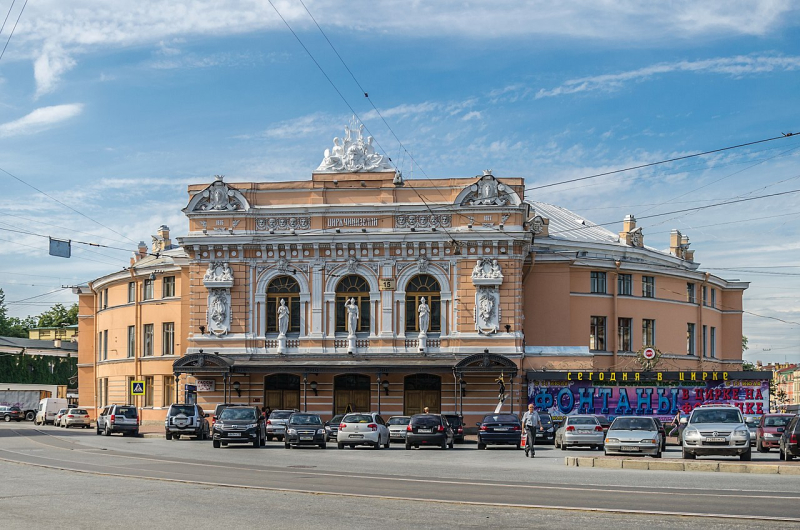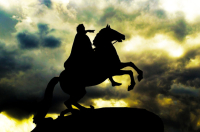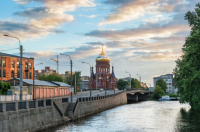My grandparents first took me to the Bolshoi Saint Petersburg State Circus when I was five or six. I remember the heavy doors, the marble staircase, the scent of fresh sawdust, the red velvet of the seats and the hush that falls around the arena as the drumroll rocks the house.
It was pure magic. As the live orchestra took their first note and the curtain lifted, giddy kids slid to the edge of their seats to watch riders do death-defying tricks on galloping horses and equilibrists rise all to the way to the top of the dome. As the show progressed, clowns do silly, but also awe-inspiring tricks, and acrobats defied gravity.
Back then, dad and I would be the first to start clapping and soon the entire arena would erupt in applause. It was almost just as fun as the circus itself.
Over the years, I brought here my foreign and local friends, who appreciated the historic building and the pure mastery of the performers. To them, it was (and is) as much of what makes St. Petersburg an imperial capital as palaces and museums, with a nod, perhaps, to their own inner child.
Saint Petersburg State Circus first opened its doors on December 26, 1877 and was the first stationary brick-and-mortar circus in Russia. The mastermind behind it was Gaetano Ciniselli, an Italian citizen and head of a large circus family.
The building was constructed using the latest technologies of the time and featured a dome unsupported by columns that spanned 49.7 meters. The ruffled dome design was later used in various buildings. The inside was decked out with all the glory of a famous European circus complete with red velvet, gold and mirrors. The total capacity was up to 5,000 guests. Some of the artifacts from those times are now part of the circus museum, just off the main hall.
When I took my little son to the Circus for the first time this winter, I couldn’t help but compare it to the shows put up by Cirque du Soleil and other spectacular companies of our time. But this place is not like that, and it wouldn’t be a fair comparison. Noone plunges into water to psychedelic music, and the scenery, even with all its gold and velvet, is far from a technological wonder.
What blew my mind was that five acts in the show we were watching were performed by families, with several generations of circus performers sharing the stage. These acts have serious roots. The quick-change performance was originally done by the grandparents of the couple performing their take on it for us. In a bicycle act, which at first I thought was going to be lame, four generations built a human pyramid with incredible skill and grace. Their commitment to their mastery and the delight of the audience is hard to find elsewhere.
This is an old-school circus, in an old-school building, with “clown noses” and cotton candy on sale in the lobby. Kids dance to a guy playing the trumpet during intermission. Seats are still red velvet, but more comfortable. And the hush still falls over the place with the first drumroll.




